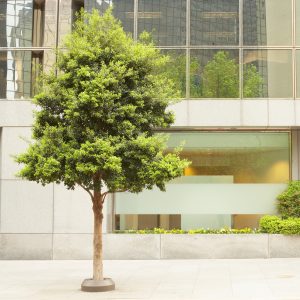What You Need to Know

While no changes were made to the LEED Minimum Program Requirements, the following highlights the key points within each LEED category.
Location and Transportation
- Reduced Parking Footprint recognizes variations in consumer behavior; preferred parking requirements were removed, and reduction is now an option along with three new credit options rewarding projects for no off-street parking, providing carshare parking, or unbundling parking
- Green Vehicles has been renamed Electric Vehicles; the credit now refers to electric vehicles only and offers a new option rewarding the installation of electric vehicle infrastructure
- Bicycle Facilities requirements better accommodate diverse project-types; storage requirements are more representative of common site conditions and differing requirements for shower amounts were added for large-occupancy projects
Sustainable Sites
- Protect or Restore Habitat is more accessible for projects; the restoration threshold has been reduced; soil and vegetation guidance has been added; and financial requirements for funding off-site land preservation have been lowered
- Rainwater Management requirements are more applicable and achievable due to lower minimum percentile storm events and more guidance for zero-lot-line projects
- Site Assessment is more relevant to international project teams; the U.S. specific TR-55 standard is no longer required
Water Efficiency
- Updates to Indoor Water Use Reduction recognize variations in standard supply pressure across the globe and the European product labeling program
- Cooling Tower and Process Water Use requirements have been adjusted to be more relevant and achievable for projects; two new credit options incorporate a previous pilot credit and reward the use of alternative recycled water to meet process water demand
- Core and Shell (C+S) only: Re-allocated points from Indoor Water Use Reduction to Outdoor Water Use Reduction and Cooling Tower and Process Water Use to better align with C+S scope of work
Energy and Atmosphere
- The referenced standard for energy performance has been updated to ASHRAE 90.1-2016; and for the first time a carbon metric is included; projects are now required to demonstrate performance against two metrics: cost and greenhouse gas emissions
- The credit category includes new options for diverse project types, including data centers, and a new prescriptive option for individual systems optimization in BD+C
- Renewable Energy Production and Green Power and Carbon Offsets are combined into a new credit, Renewable Energy, to better address diverse methods of renewables procurement and evolving global renewables markets
- Demand Response is updated to Grid Harmonization to recognize the role of buildings in supporting grid-scale decarbonization; the new credit option rewards technologies and strategies for building load flexibility and management
Materials and Resources
- To encourage greater uptake of all Materials and Resources credits, additional credit pathways have been introduced and credit achievement thresholds have been updated for several credits, including building life-cycle impact reduction and building product disclosure and optimization (BPDO) credits
- The credit category fine-tunes requirements with revised credit achievement thresholds to acknowledge variations for different project types and scopes of work. These updates include revised thresholds for number of products, cost, and number of separate manufacturers in the building product disclosure and optimization credits. This includes a specific focus on accommodating smaller and/or less material intensive projects and project types such as Warehouses and C+S to make credits more achievable
- The Construction and Demolition Waste credit is revised for challenging project sites and features updated total waste reduction thresholds
- Greater emphasis and weighting is given to embodied carbon reductions through building reuse, salvage, whole building LCA, and EPDs
Indoor Environmental Quality
- The compliance methodology in the Low-Emitting Materials credit is restructured to be more straightforward while still promoting holistic consideration of the wide range of products installed in the building and how those products impact indoor air quality
- Greater focus is placed on improving indoor air quality through more approachable air testing options in the indoor air quality assessment credit and uses the latest standards for ventilation in the minimum indoor air quality performance prerequisite and enhanced indoor air quality strategies credit
- The entry points for both the Daylight and Acoustic Performance credits are lowered to encourage more projects to consider daylight and acoustic performance during design. Both credits also give more flexibility to the designer to appropriately address important design considerations: including excessive sunlight (for daylight) and sound transmission between spaces (for acoustics)
3R Sustainability Can Help
The consultants at 3R always stay up-to-date on the latest versions and possible options to help projects achieve LEED certification. While we hope to be brought onto a project as early as possible, never hesitate to call 3R during any project phase to help you determine the most feasible pathway to LEED certification.